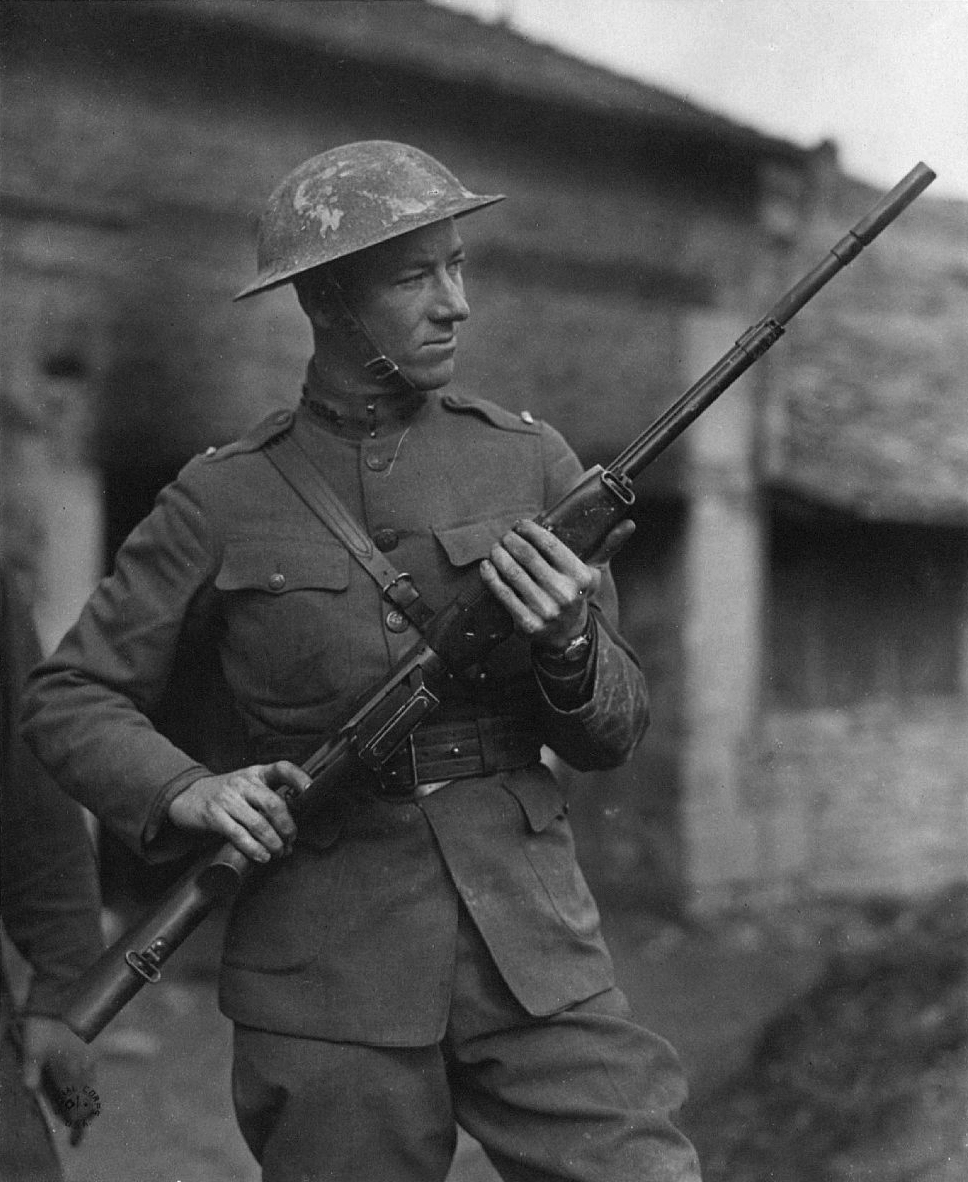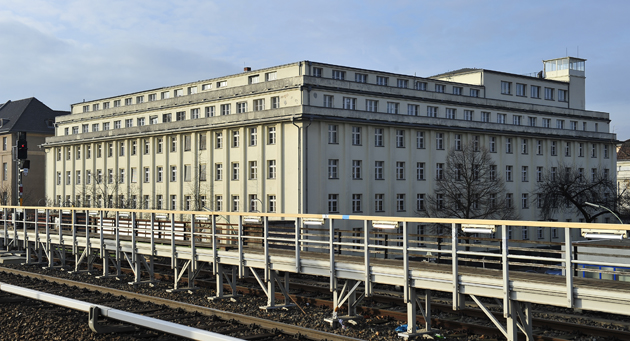|
Vollmer M35
__NOTOC__ The Vollmer M 35 (also known as Vollmer-Maschinenkarabiner or MKb 35) consisted of a series of experimental automatic rifles developed by Heinrich Vollmer in the 1930s. The Vollmer rifles were chambered in an intermediate cartridge that was co-developed with Gustav Genschow and Co. (GECO) starting in 1934, under a Heereswaffenamt contract. Design The M 35 was a gas-operated design, reminiscent of an earlier semi-automatic design of Vollmer—the 7.92×57mm Selbstladegewehr 29 (SG 29). Trials with Vollmer's Maschinenkarabine were conducted as early as 1935 at Biberach and later at Kummersdorf. The early version had a 20-round detachable box magazine and could fire at a rate of about 1,000 rpm. Development continued with the improved versions M 35A, M 35/II (1937) and M 35/III through 1938. The later versions had intentionally reduced rate of fire to only about 300–400rpm. It weighed about and was about long. About 25 prototypes were manufactured for testing. The gun ... [...More Info...] [...Related Items...] OR: [Wikipedia] [Google] [Baidu] |
Automatic Rifle
An automatic rifle is a type of autoloading rifle that is capable of fully automatic fire. Automatic rifles are generally select-fire weapons capable of firing in semi-automatic and automatic firing modes (some automatic rifles are capable of burst-fire as well). Automatic rifles are distinguished from semi-automatic rifles in their ability to fire more than one shot in succession once the trigger is pulled. Most automatic rifles are further subcategorized as battle rifles or assault rifles. History Mannlicher In 1885 Ferdinand Mannlicher made an experimental self-loader based on work begun in 1883 in both semi-automatic and fully automatic modes. It was an impractical failure due to fouling by its black powder ammunition, but it influenced later designs. Furthermore, Mannlicher produced smokeless powder automatic rifles from the early 1890s onwards until his death in 1904. Cei-Rigotti One of the world's first automatic rifles was the Italian Cei-Rigotti. Introduced in ... [...More Info...] [...Related Items...] OR: [Wikipedia] [Google] [Baidu] |
Heinrich Vollmer
Heinrich Vollmer (1885 in Altdorf, Esslingen–1961 in Tübingen) was a German small-arms designer. Vollmer began his manufacturing career by making parts for the German copies of the Maxim gun during the First World War. His first innovation was a beltless feed for the MG08/15. It was followed by a somewhat similar device for the MP/18/I submachine gun—this consisted of a 60-round circular, spool magazine that was carried by the soldier on loop on his hip and it was connected to the gun by a flexible hose. (The latter can be seen at the Wehrtechnische Studiensammlung Koblenz (WTS) as item #50008).G. de Vries, B.J. Martens: The MP 38, 40, 40/1 and 41 Submachine gun, Propaganda Photos Series, Volume 2, Special Interest Publicaties BV, Arnhem, The Netherlands.First Edition 2001, pages 8-13 In the early 1920s, Vollmer started to develop his own sub-machineguns. His early models, named VPG, VPGa, VPF and VMP1925 were fairly similar to the MP18. The VMP1925 had a wooden handgrip a ... [...More Info...] [...Related Items...] OR: [Wikipedia] [Google] [Baidu] |
Intermediate Cartridge
An intermediate cartridge is a rifle/carbine cartridge that has significantly greater power than a pistol cartridge but still has a reduced muzzle energy compared to fully powered cartridges (such as the .303 British, 7.62×54mmR, 7.92×57mm Mauser, 7.7×58mm Arisaka, .30-06 Springfield, or 7.62×51mm NATO), and therefore is regarded as being "intermediate" between traditional rifle and handgun calibers. As their recoil is significantly reduced compared to full-power cartridges, fully automatic rifles firing intermediate cartridges are relatively easy to control. However, even though they are less powerful than a traditional full-power cartridge, the external ballistics are still sufficient for an effective range of , which covers most typical infantry engagement situations in modern warfare. This allowed for the development of the assault rifle, a type of versatile selective fire small arms that is lighter and more compact than traditional battle rifles that fire full-po ... [...More Info...] [...Related Items...] OR: [Wikipedia] [Google] [Baidu] |
Heereswaffenamt
''Waffenamt'' (WaA) was the German Army Weapons Agency. It was the centre for research and development of the Weimar Republic and later the Third Reich for weapons, ammunition and army equipment to the German Reichswehr and then Wehrmacht The ''Wehrmacht'' (, ) were the unified armed forces of Nazi Germany from 1935 to 1945. It consisted of the ''Heer'' (army), the ''Kriegsmarine'' (navy) and the ''Luftwaffe'' (air force). The designation "''Wehrmacht''" replaced the previous .... It was founded 8 November 1919 as ''Reichwaffenamt'' (RWA), and 5 May 1922 the name was changed to ''Heereswaffenamt'' (HWA). The task of overseeing Germany's gigantic pre-World War II rearmament program was given to the ''Heeresabnahmestelle'' (the Army Acceptance Organization, commonly referred to as the ''Abnahme''), a subsidiary of the ''Heereswaffenamt''. By 1940 the ''Abnahme'' consisted of 25,000 personnel in five departments in 16 inspection areas, augmented by specially selected plan ... [...More Info...] [...Related Items...] OR: [Wikipedia] [Google] [Baidu] |
Biberach An Der Riss , a May 9, 1800 battle at Biberach an der Riß
{{geodis ...
Biberach may refer to: *Biberach an der Riß, a town in Upper Swabia, Germany *Biberach (district), which has Biberach an der Riß as its capital *Biberach, Baden, a municipality in the ''Ortenaukreis'', Germany *Biberach is a part of Roggenburg, Bavaria, Germany *Biberach is also a part of the town of Heilbronn, Germany See also *Battle of Biberach (1800) The Battle of Biberach on 9 May 1800 saw a French First Republic corps under Laurent Gouvion Saint-Cyr engage part of a Habsburg Austrian army led by Pál Kray. After an engagement in which the Austrians suffered twice as many casualties as ... [...More Info...] [...Related Items...] OR: [Wikipedia] [Google] [Baidu] |
Kummersdorf
Kummersdorf is the name of an estate near Luckenwalde, around 25 km south of Berlin, in the Brandenburg region of Germany. Until 1945 Kummersdorf hosted the weapon office of the German Army which ran a development centre for future weapons as well as an artillery range. Early history In 1871, the Prussian ministry of war decided to move the artillery test range at Tegel to the Kummersdorf Forest. The new range became operational on 15 October 1875 when it was connected with the Royal Prussian Military Railway. In 1880, the first firing experiments took place on the 12 km southeast-northwest firing range. These experiments investigated the effectiveness of various fortifications, and the effects of weapons and projectiles. Total size of the Kummersdorf Firing Range was 878.1 hectares. In 1913, the dropping of bombs from the LZ 13 Hansa airship and Wright biplanes was investigated. In the 1920s, secret development started in the areas of artillery, armored forces, mo ... [...More Info...] [...Related Items...] OR: [Wikipedia] [Google] [Baidu] |
Reichsmark
The (; sign: ℛℳ; abbreviation: RM) was the currency of Germany from 1924 until 20 June 1948 in West Germany, where it was replaced with the , and until 23 June 1948 in East Germany, where it was replaced by the East German mark. The Reichsmark was subdivided into 100 s (Rpf or ℛ₰). The Mark is an ancient Germanic weight measure, traditionally a half pound, later used for several coins; whereas (''realm'' in English), comes from the official name for the German state from 1871 to 1945, . History The Reichsmark was introduced in 1924 as a permanent replacement for the Papiermark. This was necessary due to the 1920s German inflation which had reached its peak in 1923. The exchange rate between the old Papiermark and the Reichsmark was = 1012 ℳ (one trillion in American English and French, one billion in German and other European languages and British English of the time; see long and short scale). To stabilize the economy and to smooth the transition, the Papierm ... [...More Info...] [...Related Items...] OR: [Wikipedia] [Google] [Baidu] |
Sturmgewehr 44
The StG 44 (abbreviation of Sturmgewehr 44, "assault rifle 44") is a German assault rifle developed during World War II by Hugo Schmeisser. It is also known by its early designations as the MP 43 and MP 44 (''Maschinenpistole 43'' and ''44''). The StG 44 was an improvement of an earlier design, the Maschinenkarabiner 42(H). The StG 44 was the first successful assault rifle, with features including an intermediate cartridge, controllable automatic fire, a more compact design than a battle rifle with a higher rate of fire, and being designed primarily for hitting targets within a few hundred metres. Other rifles at the time were designed to hit targets of over a thousand meters, but this was found to be in excess of the range in which most enemy engagements actually took place. The StG 44 fulfilled its role effectively, particularly on the Eastern Front, offering a greatly increased volume of fire compared to standard infantry rifles. The StG largely influenced the Soviet AK-4 ... [...More Info...] [...Related Items...] OR: [Wikipedia] [Google] [Baidu] |
Fedorov Avtomat
The Fedorov Avtomat (also anglicized as Federov, ) or FA is a select-fire infantry rifle and also one of the world's first operational automatic rifles, designed by Vladimir Grigoryevich Fyodorov in 1915 and produced in the Russian Empire and later in the Russian Soviet Federative Socialist Republic. A total of 3,200 Fedorov rifles were manufactured between 1915 and 1924 in the city of Kovrov; the vast majority of them were made after 1920. The weapon saw limited combat in World War I, but was used more substantially in the Russian Civil War and in the Winter War. Some consider it to be an "early predecessor" or "ancestor" of the modern assault rifle. Design and development The Fedorov Avtomat is a short-recoil operated, locked-breech weapon which fires from a closed bolt. The bolt locking is achieved by a pair of symmetrical plates mounted to either side of the breech and held in place by a sheet metal cover, each with two lugs, one square and one round, mounted at either sid ... [...More Info...] [...Related Items...] OR: [Wikipedia] [Google] [Baidu] |
Ribeyrolles 1918 Automatic Carbine
The Ribeyrolles 1918 was an attempt to manufacture an automatic rifle for the Military of France, French forces. It was chambered in the experimental 8×35mm Cartridge (firearm), round, used straight blowback, was fed from a 25-round detachable Magazine (firearms), magazine and had an effective range of 400 meters. The cartridge, which some argue was the first purpose-built intermediate cartridge, was obtained by necking down the .351 Winchester Self-Loading. Another source indicates that it was chambered in a cartridge designated 8×32mmSR."Re: FRENCH WEAPONS" #56 has info from Cf "Re: FRENCH WEAPONS" #58 Its official name was ''Carabine Mitraill ... [...More Info...] [...Related Items...] OR: [Wikipedia] [Google] [Baidu] |






